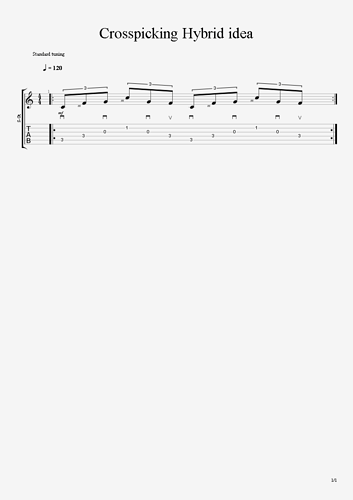@Troy Can you tab out the 4 String stuff you were doing in the webinar. It sounded really pretty, and I couldn’t quite figure out what you were doing.
Also, you didn’t quite grasp my question, but your response pointed me in a good direction. I’ve been focused on the 3 string forward roll with pattern 432432 42 , which has that little hiccup of 2 notes at the end to make it 8 notes. I was saying I’ve been working on this as 4 pairs of 2 notes, 43-24-32-42 and you, not understanding said, you just think of it as 6 movements. 432 432
This got me to realize you were doing the continuous version of the forward roll, and I had never really worked on that. 432 432 432 432 …
In a couple of hours of just doing this, I’m already seeing more consistency, even when I switch back to doing the hiccup version. I think the hiccup version of the forward roll is much harder to start off learning and get that consistent feel, and now I think better to master the continuous version of forward roll and reverse roll, before moving on to forcing them into 8 notes.




